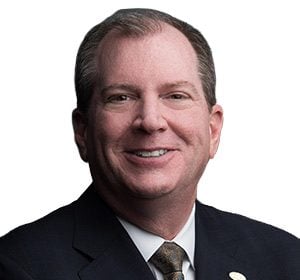
Trending Oversight Topics
Governance Surveys
Center for Inclusive Governance
It’s Time to Restore Balance in the Board-CEO Relationship
01/18/2024

According to Challenger, Gray & Christmas’ year-end CEO Turnover Report, 2023 had 51 percent more US CEO departures than in 2022, only 21 percent of which were due to retirement, compared to 25 percent last year.
All sudden CEO departures (and even some that are not so sudden) can disrupt operations, weaken company reputation, and depress shareholder value. They can also cost the firm money—$183.6 million per year per firm, says a recent study of North American firms from professors at Washington University in St. Louis, and $112 billion collectively across the globe, according to an often-cited study from PwC. One wonders how boards let this happen so often. Based on my experience and NACD research, the problem may stem from a hyperfocus on the “board” side of the board-CEO relationship.
It's only natural for directors to focus on their own information needs and to prioritize those above what the CEO may need from them. After all, directors have a fiduciary duty to serve the interests of owners and by extension other stakeholders. Chief among their duties is hiring, evaluating, compensating, and, when necessary, replacing the CEO. Because they are evaluating CEOs, directors tend to focus on what they as board members (and those they represent) expect from the CEOs. But intense focus on this can cause directors to lose sight of the rest of the picture—namely what the CEO can expect from them as board members. We would be wise to remember that boards are not just supposed to monitor management performance; they are also expected to enhance it through wise counsel and decision-making. And this requires a good working relationship.
The importance of the board-CEO relationship is unequivocal. NACD’s 2023 Public Company Board Practices and Oversight Survey and our 2023 Private Company Board Practices and Oversight Survey each asked respondents what attributes were most important in creating an effective board culture. In both surveys the board-management relationship ranked highly, coming in second in the public company survey behind diversity of thought, and tying in the private company survey with having an effective board leader.
Yet 15 percent of public company directors and 20 percent of private company directors we surveyed this year disagreed with the statement that “the board-management relationship is effective in my organization.” When asked what they have done to improve relations, only 33 percent of public company directors and 26 percent of private company directors said that they had solicited management feedback about the performance of the board.
It is time to reset expectations between boards and management. One resource is NACD’s 2023 Blue Ribbon Commission on Culture as the Foundation: Building a High-Performance Board. The report made ten key recommendations. In my view, among the most prescient addressed is management’s need for a high-performance board, and not the other way around.
The Commission, cochaired by two experienced public company directors—Oscar Munoz, past CEO and chair of United Airlines, and Mary Winston, past CEO of Bed Bath and Beyond—counseled boards to agree on a clear delineation of board and management authority (Recommendation Two) to “clarify board engagement expectations.” The report notes that during agenda setting, the independent board leader (chair or lead director), together with input from the CEO and the full board, can determine exactly what the board is expected to do with each agenda item (inform, approve, analyze, etc.).
Boards need the humility to ask CEOs and senior managers what they think of the board's performance. Conversely, CEOs need the courage to seek the same from the board. A good independent chair or lead director can facilitate this vital dialogue, as noted in our report. Frank talks, accompanied by task-oriented agendas, will give boards the information they need to build long-term value in partnership with the CEO, leading to lower CEO turnover and improved corporate performance.

Peter R. Gleason is president and CEO of NACD.